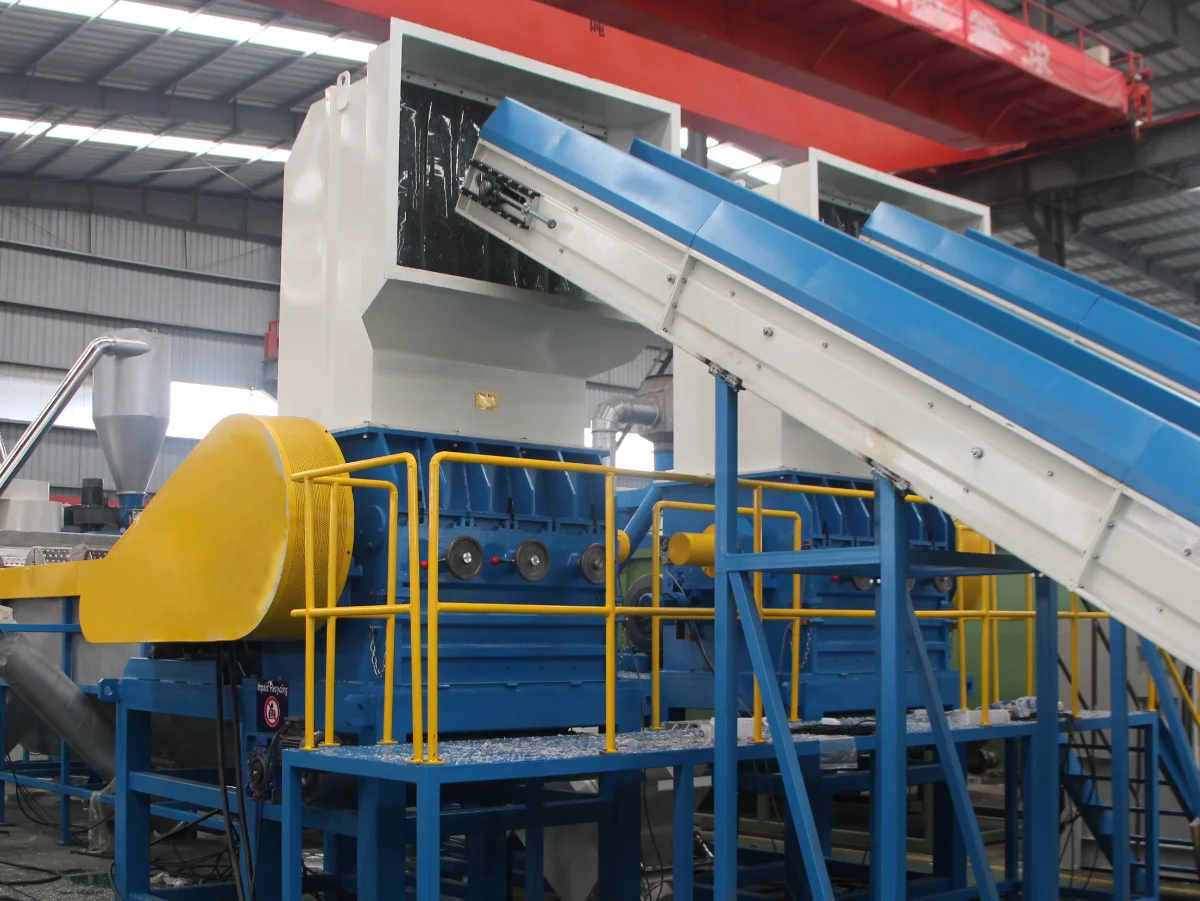In the plastic recycling industry, wet plastic grinding machines have become essential due to their superior performance and environmental benefits. These machines are specifically designed to process various plastics by integrating water into the grinding mechanism, resulting in enhanced efficiency and reduced operational issues.
Key Features and Advantages
- Enhanced Cleaning and Lubrication: The incorporation of water during grinding acts as a lubricant and aids in the removal of surface contaminants, ensuring a cleaner output and reducing the need for additional cleaning processes.
- Extended Operational Lifespan: By reducing friction and heat generation, wet grinding minimizes wear on blades and other components, leading to longer intervals between maintenance and blade sharpening.
- Improved Safety and Environmental Impact: The wet process significantly decreases dust generation, contributing to a safer working environment and aligning with environmental sustainability goals.
Operational Principles
Wet plastic grinding machines operate using a high-speed rotor equipped with durable steel knives. The introduction of water into the cutting chamber serves dual purposes: it cools the cutting interface and facilitates the breakdown of plastics into smaller, more manageable pieces. This method is particularly effective for processing a variety of plastic materials, including PET bottles, films, and rigid plastics.
Applications
- Diverse Material Processing: These machines are adept at handling various plastic types, making them suitable for recycling operations dealing with mixed plastic waste streams.
- Pre-Washing Capabilities: The wet grinding process allows for simultaneous pre-washing of plastics, enhancing the overall efficiency of the recycling operation.
Maintenance Best Practices
To ensure optimal performance:
- Regular Knife Maintenance: Schedule routine sharpening and rotation of knives to maintain cutting efficiency.
- Preventive Inspections: Conduct regular checks to prevent the introduction of foreign materials that could cause damage.
- Screen Monitoring: Keep the screen free from clogs to ensure consistent material flow.
- Proper Lubrication: Maintain adequate lubrication of the motor and bearings to reduce friction and prevent overheating.
Implementing these maintenance practices can significantly enhance the longevity and performance of wet plastic grinding machines.
Conclusion
Wet plastic grinding machines offer a range of benefits that make them a valuable asset in plastic recycling operations. Their ability to efficiently process various plastics, coupled with advantages such as improved cleaning, reduced maintenance, and enhanced safety, positions them as a preferred choice for recyclers aiming to optimize their processes and contribute to environmental sustainability.
By integrating wet plastic grinding machines into their operations, recycling facilities can achieve higher-quality outputs, streamline their processes, and support the global initiative towards sustainable plastic waste management.

Inquires
To get the latest prices and lead times, send us a message using the form below.




[…] Wet Plastic Granulator Specifications […]
[…] Wet Plastic Granulator Specifications […]